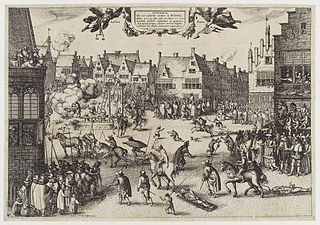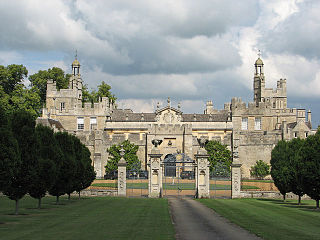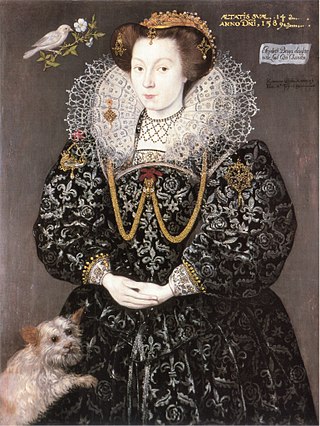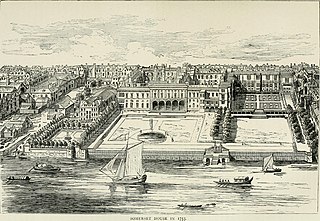
Brigstock is a village and civil parish in the English county of Northamptonshire. Administratively it is part of North Northamptonshire. From 2001 to 2011, the parish population increased from 1,329 to 1,357.

Salomon de Caus was a French Huguenot engineer, once (falsely) credited with the development of the steam engine.
William Fowler was a Scottish poet or makar, writer, courtier and translator.

Robert Keyes was a member of the group of provincial English Catholics who planned the failed Gunpowder Plot of 1605, a conspiracy to assassinate King James I by blowing up the House of Lords during the State Opening of Parliament on 5 November 1605. He was the sixth man to join the plot.

Elizabeth Trevannion, Countess of Monmouth, was an English aristocrat and keeper of Prince Charles.
John Mordaunt, 1st Earl of Peterborough was an English peer.
John Mordaunt, 1st Baron Mordaunt was an English politician and peer.

Susan Herbert, Countess of Montgomery, was an English court office holder. She served as lady-in-waiting to the queen consort of England and Scotland, Anne of Denmark. She was the youngest daughter of Elizabethan courtier, and poet Edward de Vere, 17th Earl of Oxford.

Drayton House is a Grade I listed country house of many periods 1 mile (1.6 km) south-west of the village of Lowick, Northamptonshire, England.

Mary Stuart was the third daughter and sixth child of James VI and I by Anne of Denmark. Her birth was much anticipated. She developed pneumonia at 17 months and died the following year.

Frances Howard, Countess of Kildare, was a courtier and governess of Princess Elizabeth Stuart, Queen of Bohemia, and a member of the House of Howard.

Elizabeth Brydges was a courtier and aristocrat, Maid of Honour to Elizabeth I, and victim of bigamy. She was a daughter of Giles Brydges, 3rd Baron Chandos, and Frances Clinton, who lived at Sudeley Castle.
Mary Gargrave was a courtier to Anne of Denmark.
Sir Francis Gofton was an English courtier and administrator. He was an auditor of royal accounts and jewels, Chief Auditor of the Imprest from 1597 and Auditor of Mint from August 1603. Gofton acquired the manor of Heathrow, and houses in Stockwell and West Ham. He was often called "Auditor Gofton". The surname is frequently transcribed as "Goston" or "Guston"
Charles Cauchon de Maupas et du Thour or du Tour (1566-1629), was a French ambassador to the Scottish and English court of James VI and I.

Sir Thomas Griffin was an English landowner and hosted the royal family at Dingley.
Robert Wroth was an English courtier and Member of Parliament for Newtown.

Edward Cary or Carey or Carye was an English courtier and Master of the Jewel Office for Elizabeth I and James VI and I.
Mary Habington or Abington, néeParker was an English recusant. Antiquarian writers thought that she was the author of the anonymous letter to her brother William Parker, 4th Baron Monteagle which warned of the Gunpowder Plot. This theory is dismissed by modern historians. She sheltered a number of Catholic priests and recusants at her Worcestershire home Hindlip Hall.

Ralph Ewens of South Cowton (1569–1611) was an English administrator and Member of Parliament.












